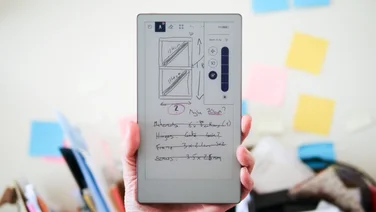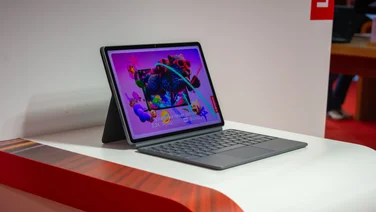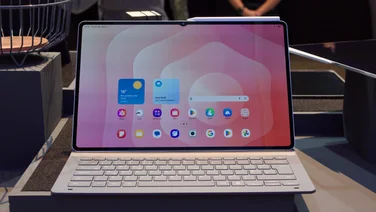To help us provide you with free impartial advice, we may earn a commission if you buy through links on our site. Learn more
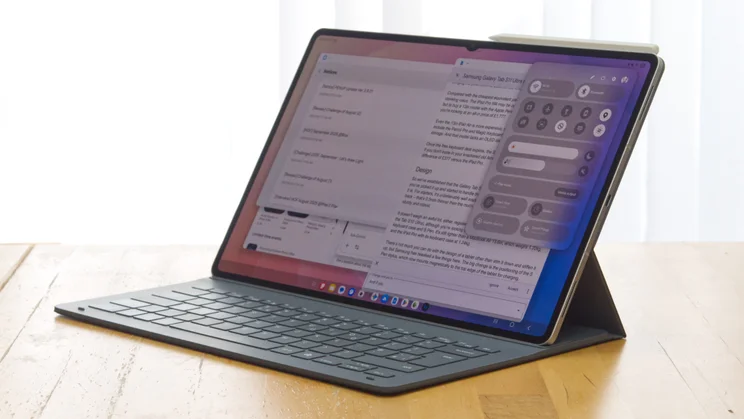
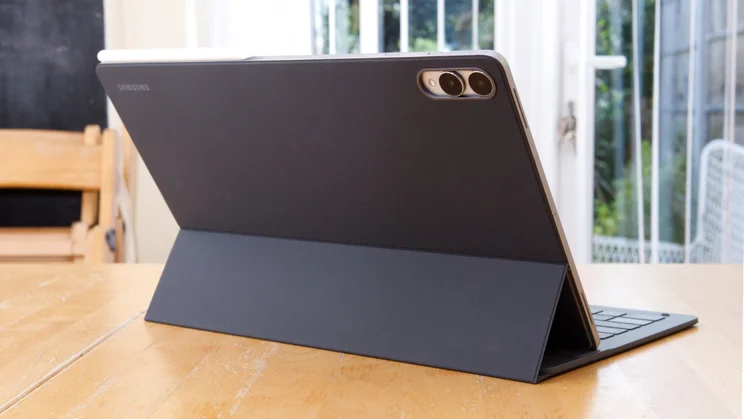
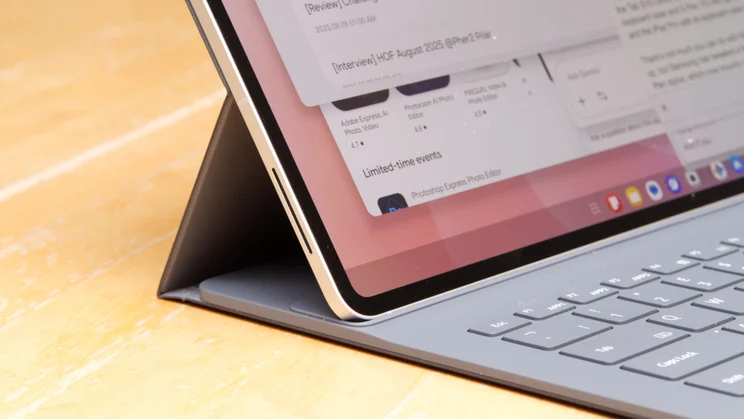
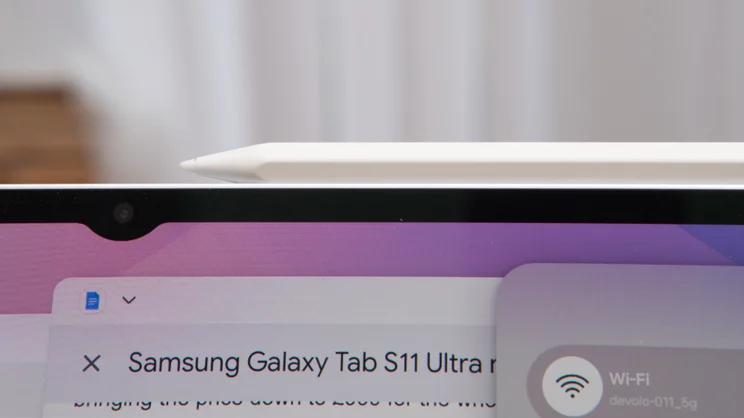
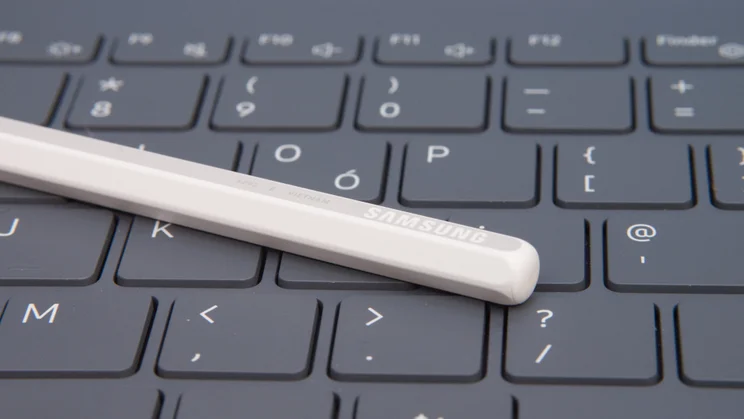
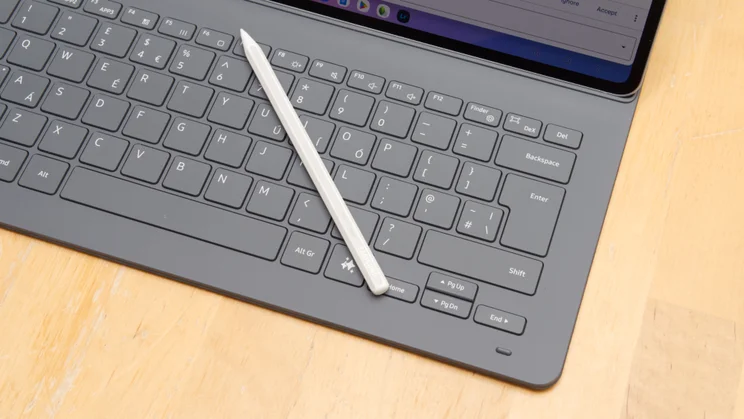
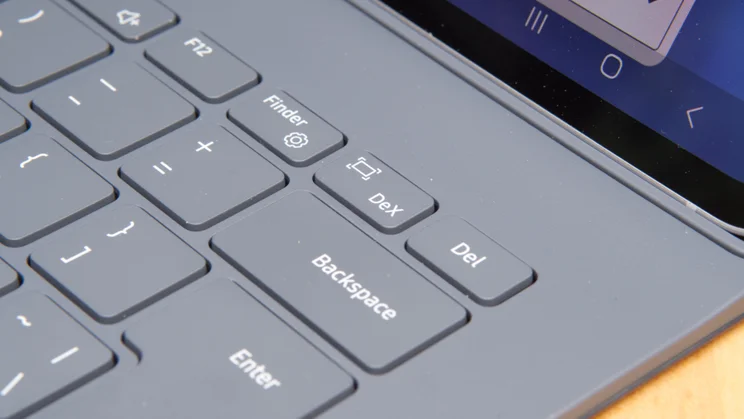
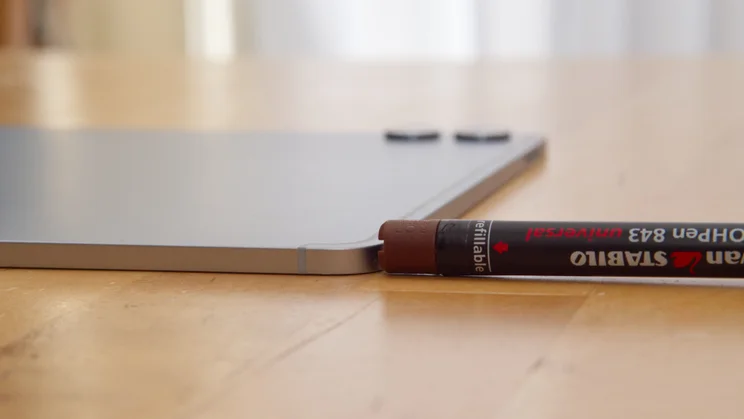
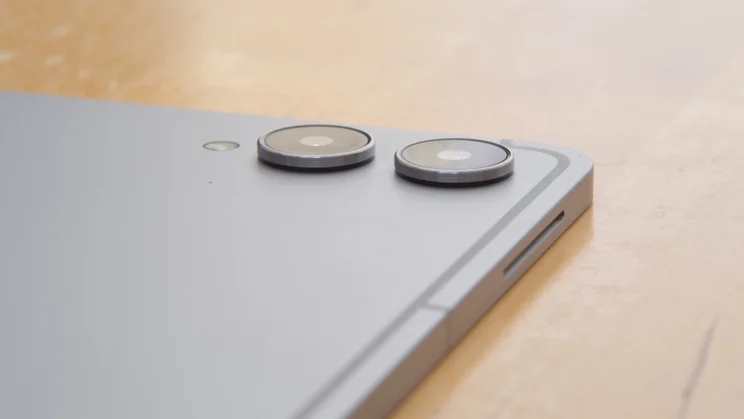
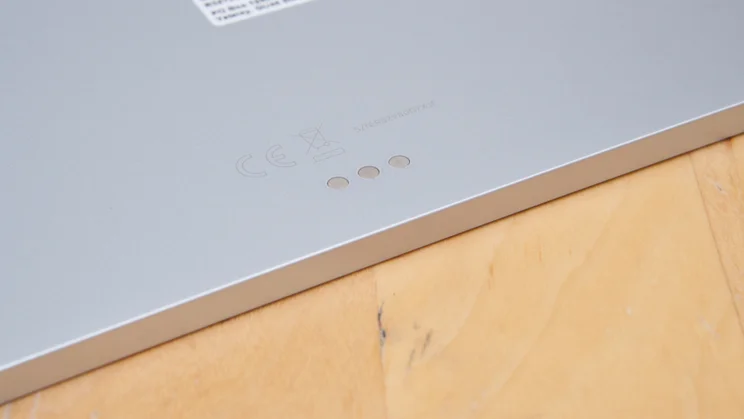
- Big, beautiful display
- Stylus included
- Proper dual-monitor support – at last
- Monitor support struggles with ultrawide screens
- Android continues to let the side down, app-wise
It seems that tablets like the Samsung Galaxy Tab S11 Ultra have been trying to reinvent themselves as laptops for years now. But for equally as long a time, the laptop has kept just a few steps ahead. I tried using an iPad Pro as my main working laptop for a whole year a couple of years ago, but since returning to a 15in M2 MacBook Air I haven’t looked back.
Can the Samsung Galaxy Tab S11 Ultra convince me it’s time to try a tablet again? There are several reasons why it might, not least its new ability to properly support dual monitors, but an equal number of reasons why it might not.
- Samsung has produced a more practical version of its big-screen productivity tablet this year, adding proper dual-monitor support to its DeX desktop UI
- It has done this without compromising the design – it’s even thinner than last year and just as sleek and desirable
- It’s a faster tablet than its predecessor with far better battery life, although it can’t quite match the Apple iPad Pro M4 on either count
- The Android app ecosystem remains a bit of an albatross for Samsung tablets, though – the choice of professional apps isn’t nearly as good as it is on iPadOS
What you need to know
It’s been just a year since the launch of the last Samsung Galaxy Tab S10 Ultra. That was the first premium Samsung tablet we’d seen with a MediaTek processor inside, and it was a decent machine: I said at the time it was the best Android tablet you could buy. However, in terms of both performance and battery life it was about the same as the tablet that went before it.
This time, we have a proper upgrade – internally, from the old Mediatek Dimensity 9300+ to the faster, more efficient Mediatek 9400+. And as a result, we have better battery life and benchmark scores. We also have an improved keyboard case and the tablet itself is slightly thinner, too. In fact, the Samsung Galaxy Tab S11 Ultra joins the M4 Apple iPad Pro at 5.1mm as the thinnest tablet on the market.
The new features don’t stop there, though. There’s also a redesign for the S Pen stylus and a new place to charge it – on the top edge instead of the rear. And proper dual monitor support has finally been added in the shape of Samsung’s Extended Mode.
Price and competition
As usual, the Samsung Galaxy Tab S11 Ultra comes in a number of different configurations, with storage options ranging from 256GB to 1TB. For a premium, you can choose to unlock 5G capability as well.
Prices start at £1,199 for the Wi-Fi only 256GB model. It’s £100 more for the 512GB model and the 1TB tablet is £1,549. Samsung includes the S Pen stylus in the box for free across all models and, even better, if you buy one before 28 October 2025 you’ll also be able to claim a free keyboard case: an accessory that normally costs £199.










What’s more, if you take advantage of Samsung’s new trade-in scheme, which lets you send in any phone or tablet in any condition, you can get a “guaranteed” minimum of £200 off the price, bringing the price down to £999 for the whole package.
Compared with the cheapest equivalent package from Apple, this looks like absolutely stonking value. The iPad Pro M4 may be on another planet when it comes to performance, but to buy a 13in model with the Apple Pencil Pro, Magic Keyboard and 256GB of storage, you’re looking at an all-in price of £1,777.










Even the 13in iPad Air is more expensive, at £1,327 for the equivalent 256GB model (if you include the Pencil Pro and Magic Keyboard case) and £1,227 for the model with 128GB of storage. And that model lacks an OLED display.
Once the free keyboard deal expires, the S11 Ultra does, admittedly, become less of a bargain. But even if you don’t trade-in your old knackered Amazon tablet, you’re still looking at a price difference of £377 versus the iPad Pro.
Design
So we’ve established that the Galaxy Tab S11 Ultra is a bit of a bargain, but it’s only once you’ve picked it up and started to handle the thing that you realise how much of a good deal it is. For starters, it’s unbelievably well made. Despite measuring a mere 5.1mm from front to back – that’s 0.5mm thinner than the much-vaunted iPhone 17 Air, by the way – it feels sturdy and robust.
It doesn’t weigh an awful lot, either. It registers a mere 692g on the scales (26g lighter than the Tab S10 Ultra), although you’re looking at a relatively porky 1.17kg once you include the keyboard case and S Pen. It’s still lighter than a MacBook Air 13.6in, which weighs 1.22kg, and the iPad Pro with its keyboard case at 1.24kg.










There’s not much you can do with the design of a tablet other than slim it down and stiffen it up, but Samsung has tweaked a few things here. The big change is the positioning of the S Pen stylus, which now mounts magnetically to the top edge of the tablet for charging, instead of at the rear. No more guessing if you’ve left it at home and fumbling around at the rear of the tablet to put it away – you can see exactly where it is at all times.
It’s still not perfect. The strength of the magnets holding it in place is weak, which means when you slide it into your laptop bag or pull it out, there is always the chance it’s going to get knocked off its moorings. And when it is loose in the bottom of your bag, there’s the chance it’s going to get lost, too.
Keyboard and stylus
While it’s great that Samsung continues to bundle the S Pen in with the tablet, it has in fact sneaked in a downgrade in this year, by removing Bluetooth Low Energy, which means you can’t use it as a remote control for certain apps – such as the Camera – or to navigate the UI. This is not a feature I’ve ever really made extensive use of personally, so it’s no big loss to me, but any downgrade is always a disappointment.
The keyboard isn’t the best, either. It looks pretty similar to the previous one, and you’d better make full use of the offer to include one free in the box because I don’t think it’s worth the £200 asking price.










My main gripe is that, once the tablet is snapped into the magnetic pogo pin connector that provides power and data, there is no way to adjust the angle of the screen. There’s no keyboard backlight – a crime for which there is no pardon – and because the bottom edge of the tablet rests just above the top row of keys, there is no room for a touchpad, either.
And while the key action itself isn’t bad – I was able to get up to a reasonable typo-free speed in fairly short order – it still can’t match the quality of the iPad Pro’s Magic Keyboard.
One thing I did like a lot more than I expected to, however, was the dedicated AI key, positioned just to the right of the space bar. Tap this and up pops a Google Gemini window, ready and waiting to answer your typed questions. It’s a convenient way of doing a quick bit of research and I found it particularly useful in quiet environments when I didn’t want to mutter “Hey Google” under my breath at it.
Webcam and speakers
Generally, the 12MP webcam presents a good, sharp image that isn’t too badly afflicted by grain or softness. It copes reasonably well with tricky lighting, compensating well for brightly backlit scenes, and colours look nice and balanced. It’s just a shame you can’t adjust the angle of the screen, so your video call shots will always look a little wonky.
Samsung’s quad speakers are unequivocally excellent, though, and capable of producing very pleasing output. In fact, in back-to-back tests versus a MacBook Air 15, I marginally preferred the Samsung’s presentation. It was just a tad broader, spreading the sound left and right of the display to create a surprisingly broad soundscape, and it matched the warmth and richness of the MacBook Air’s speakers as well.










I still wouldn’t recommend using the speakers for listening to music if I had a pair of headphones to hand, but for watching TV shows and listening to podcasts, they do the job beautifully.
Display and cameras
Say what you like about IPS displays being perfectly acceptable, there’s nothing to beat an OLED panel like the one on the Samsung Galaxy Tab S11. It’s bright, vibrant and sharp with a resolution of 2,960 x 1,848 pixels. Its black level is deep and darker than you’ll get on any IPS screen, its 120Hz refresh rate lends onscreen animations a fluidity that 60Hz screens can’t match and its HDR presentation is great. If you start watching TV and movies on this tablet, you might not want to go back to your TV. It is that good.
There was one slight anomaly. Peak brightness in HDR playback is rated by Samsung at up to 1,600cd/m2, but I was only able to get it to output around 510cd/m2 in my tests. Still, the screen looked stunning when I fired up my usual selection of HDR test clips and it performed very well in other areas during testing as well.
Colour accuracy in each of the Vivid and Natural selectable colour profiles was excellent, with the Vivid mode scoring an average Delta E colour error of 1.07 versus DCI-P3, and the Natural mode an average error of 0.61.










That’s about as good as it gets and ensures what you see on screen should accurately reflect the artist’s intent. Contrast is effectively perfect, too – as you’d expect to see with an OLED display – and the screen is capable of reproducing 96.2% of the DCI-P3 colour gamut.
As for the cameras, for what it’s worth, these are pretty decent. You get two: one main 13MP camera and one 8MP f/2.2 ultrawide, and both can take pretty good pictures. I can’t imagine why you’d want to use them instead of the phone in your pocket when that’s easier to wield and will almost certainly produce better photos, but in a pinch these will do the job.
Software and DeX
As you’d expect, Samsung has added a selection of new AI features on the software side of things. First up, there’s the aforementioned AI button on the keyboard, which is handy, but hardly groundbreaking.
Then there’s the introduction of Gemini Live – essentially an AI assistant that can run all the time, process what is onscreen and help you as you work – plus the now familiar collection of Galaxy AI tools, including writing assistance, language interpretation, summarisation for notes and audio recordings, drawing assist and audio eraser, among others.
The new feature I was most interested in trying out, however, has nothing to do with AI. This is Samsung’s new Extended Mode, which allows the DeX desktop mode to operate seamlessly across the screen of the tablet itself and one connected monitor. I tested it on a number of different monitors and found that with basic, office monitors it worked quite well.










As with Windows laptops and MacOS monitors, you can arrange the screens so your mouse cursor flows from one to the next. With that done, you can drag windows from one monitor to another, snap windows to the right or left edge by dragging them to the perimeter of the screen, and otherwise work as if you were using a regular laptop.
However, when I challenged it with a trickier ultrawide 5,120 x 1,440 monitor, it struggled. The closest it was able to get was 2,560 x 1,440, and the only ultrawide resolution offered in the settings was 2,560 x 1,080, which didn’t match the aspect ratio of my screen.
It’s also well worth pointing out that the app selection on Android for tablets still comes a pretty distant second place to iOS, particularly on the professional creative side of things. To its credit, Samsung has worked with some app developers with pro apps for Android tablets to offer discounts for Galaxy Tab owners (Clip Studio Paint and LumaFusion, for instance) but that doesn’t really make up for the general lack of desktop focused Android software. I hunted for versions of Affinity Photo 2 and DaVinci Resolve in vain.
Still, for regular office work, I did find DeX a reasonably practical work environment. It works perfectly for things like emailing, document writing, taking notes and internet research. And the new Workspaces feature, which allows you to run multiple virtual “desktops”, does help you organise open apps effectively. I do wish that Samsung had included a way to drag apps from one desktop to another, though.
Performance and battery life
Last year’s Galaxy Tab S10 Ultra wasn’t a huge upgrade when it came to performance, but this year the MediaTek Dimensity 9400+ is a much bigger deal. This is an octa-core chip, just like the Dimensity 9300+, but it’s built on a 3nm manufacturing process, which makes it more efficient. Moreover, all its cores have received a minor frequency boost, with the main performance core running at up to 3.73GHz, and the GPU has been upgraded as well.
The result is improved performance across the board, with CPU and GPU benchmark scores improved over the Tab S10 Ultra. That said, the Tab S11 Ultra still can’t match the M4 iPad Pro, and will likely fall further behind the next iPad Pro when that eventually arrives, so it’s not all good news.
Subjectively, though, I found the Tab S11 Ultra an extremely responsive machine to use. In particular, I found Apps launched incredibly quickly, while switching between multiple tasks was lightning fast. In all my time spent with the Tab S11 Ultra, not once did I feel as if it was slowing down or I was asking too much of it.
Most importantly, however, battery life has vastly improved over the previous generation. In our tests, the tablet lasted 17hrs 10mins – again, that figure isn’t as good as the M4 iPad Pro’s 18hrs 13mins, but it’s close enough and I found it lasted a full day of work, no problem at all.
Samsung Galaxy Tab S11 Ultra review: Should you buy one?
If you were to simply consider the hardware, then the Samsung Galaxy Tab S11 Ultra has a lot going for it. It’s fast and snappy, it has great battery life, it’s beautifully made and its 14.6in display is wonderful. I like the way the stylus feels on the screen and the keyboard is reasonably comfortable to type on. It’s also better value than the M4 iPad Pro.
As always seems to be the case with Android productivity tablets, there are significant caveats. The dual-monitor support is great, but limited in the type of monitors you can connect to. And while the desktop environment works well, Android’s app ecosystem continues to let it down. For work purposes, I could get along with this tablet, but it would take a period of significant adaptation.
However, if you don’t mind a bit of a learning curve, Samsung’s latest big-screen laptop-alike is its best yet. And if you can get the whole package for £999 with the help of a sneaky trade-in, then it’s an absolute bargain.















